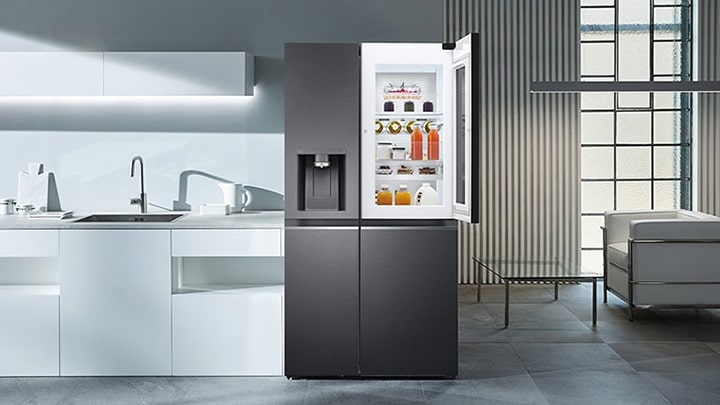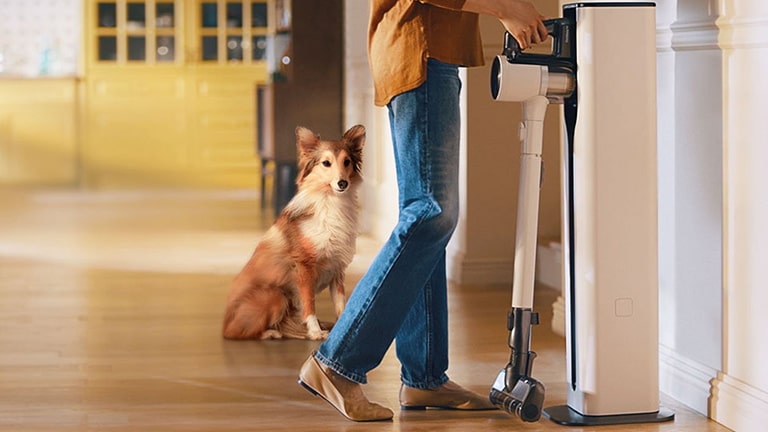We use cookies, including cookies from third parties, to enhance your user experience and the effectiveness of our marketing activities. These cookies are performance, analytics and advertising cookies, please see our Privacy and Cookie policy for further information. If you agree to all of our cookies select “Accept all” or select “Cookie Settings” to see which cookies we use and choose which ones you would like to accept.
Helpful Hints
How to Choose an Energy Efficient Refrigerator
How to Choose an Energy Efficient Refrigerator
Unlike other appliances in your home, your refrigerator is rarely – if ever – switched off. As such, it’s worth investing in an energy efficient refrigerator that’s kinder to the planet and better for your wallet. If energy ratings have you stumped, don’t worry: we’ve put together a handy guide to help you find an energy efficient refrigerator for your home.
Energy Labels on Refrigerators Explained
Energy Labels are displayed on all new refrigerators, in line with government guidelines. These labels are designed to help you, the consumer, make an informed decision when buying a new refrigerator, because they tell you how energy efficient a particular model is.
On domestic refrigerators, the Energy Rating Label shows:
● Energy Label: the energy label classifies the energy performance of a product type into five grades. A product with Grade 1 (green) energy label is among the most energy efficient in the market while a product of Grade 5 (red) is the least efficient.
● Annual Energy Consumption: this is given in kilowatt hours (kWh) per year. This gives you an estimate of how much energy the refrigerator will use over a year. However, it’s worth noting that the energy consumption may vary, depending on how you use your refrigerator, how often it’s actually switched on, and the environment that the refrigerator is operating in.
How to Use Your Refrigerator More Efficiently
If you’d like to use your refrigerator more efficiently, follow these tips below.
1: Choose the right capacity
Generally speaking, larger refrigerators use more energy than smaller ones. The size (or capacity) of a refrigerator is given in litres (L), and this indicates how much items it can hold.
Refrigerators with a higher capacity use more energy to keep the air inside cool, so it’s better to choose a capacity that’s the right size for your household needs. Below we’ve outlined the different sizes that may be suitable, based on the number of people in a home:
● 1 or 2-person household: households with 1 or 2 people will find that our smaller refrigerators – with capacities ranging from 223L-399L – meet their needs.
● 2 to 3-person household: medium size refrigerators are sufficient for a household with 2 to 3 people living in them. We have refrigerators ranging from 400L-450L, which are suitable for these households.
● 4 to 5-person household or larger: larger households of 4 persons will probably need a refrigerator that has a capacity of at least 450L. For households of 5 or more people, you will probably need larger refrigerators with capacities of 500L or more as these would be ideal for big families.
● LG has a range of small to larger refrigerators in store to suit your household needs.
2: Don’t overfill your refrigerator
Well-stocked refrigerators can be more energy efficient, because the thermal mass of the contents helps to maintain a cool temperature. However, be mindful not to overfill your refrigerator, as this could have the opposite effect. In overstocked refrigerators, air circulation can be impacted, so cool air can’t flow inside the unit as freely. What’s more, you may end up having to throw away spoiled ingredients that you didn’t get the chance to cook, which isn’t efficient in itself.
3: Keep the door closed
Try not to leave the door open for too long when you’re getting food and beverages out of the refrigerator. Every time you open the door the refrigerator has to cool down again, which requires additional energy.
Selected LG refrigerators come with LG ThinQ technology*, so you can be notified whenever the refrigerator door is left open too long. And our InstaView Door-In-Door™ refrigerators come with a separate compartment, so you can easily access everyday items like milk or snacks without fully opening the refrigerator door. Take a look at our buying guide to discover more about the energy-saving features you’ll find on some of our refrigerators.
*LG ThinQ app available on Android or iOS smartphones. Compatible smartphone with Android 4.1.2 (Jellybean) or later or iOS 9 or later required for LG ThinQ app. Phone and Home Wi-Fi Data connection and product registration on the ThinQ app required. Smart features may vary by region and model. Check with your local retailer or LG for service availability. Features and services may be changed by LG without notice.
4: Allow hot food to cool before putting it in the refrigerator
If you put a container of hot food in a refrigerator, your appliance will need to work harder – and use more energy – to cool down the hot food and then to keep everything cool. If you’re cooking in bulk or storing leftovers, wait until it has cooled down (or at least until it’s stopped steaming) before putting it in the refrigerator.
5: Set the correct temperature
It’s a good idea to set and regularly check the temperature of your refrigerator, to ensure that it’s working at an optimal level. If your refrigerator doesn’t have a built-in thermostat, buy a refrigerator thermometer to monitor the temperature inside the refrigerator.
What temperature should your refrigerator be?
When setting the temperature on your refrigerator, the below figures are a good benchmark for each compartment:
● Refrigerator compartments should be around 3°C
● Freezer compartments should be about -18°C
You may need to adjust the temperature slightly between seasons. In winter, the cooler temperatures in your home can make the temperature in your refrigerator go down too; in summer, the opposite is true. However, you should still aim to store fresh food at 0°C to 4°C, and set your freezer to somewhere between -18°C and -20°C.
Ready to Buy an Energy Efficient LG Refrigerator?
Browse the full range online to discover sleek Slim French door refrigerators, spacious InstaView Door-in-Door™ refrigerators and classic Top Freezer & Bottom Freezer Refrigerator!



